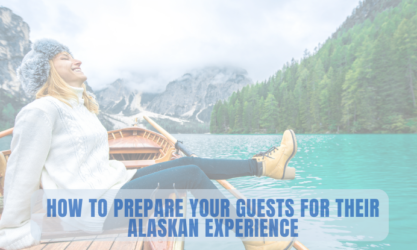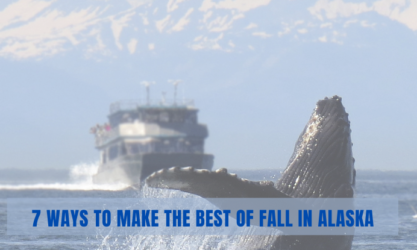
Hiking in Alaska – Planning and Safety Tips
“I’m vacationing in Alaska and can’t wait to take a hike into the wilderness. But what if I run into a bear or get lost?”
Does this sound familiar? Alaska is different from any other state – and hiking in Alaska is different as well. The scenery is unrivaled, the wilderness vast, and wildlife always just around each corner. It’s all of this and more that make hiking in Alaska an amazing experience – but also one that needs to be carefully prepared for in order to have a safe and memorable trip.
Planning is key for a smooth hiking experience. Weather can change quickly here, even during summer months we can get driving rain, snow, low clouds, high winds, thick fog, and temperatures that rollercoaster from high to low, so always do several checks before you go.
Hike with at least one partner or in a group, so you are able to watch for wildlife, keep your bearings, and help each other in case of emergency.
Have an emergency plan and be sure to let people know where you are going. This includes where you will be hiking, who you will be with, time leaving, time returning, etc. Cell phone signal can be sporadic the more remote you go, so be sure to check in when you’re leaving and when you return as well.
Consider how you will get help if you need it. Carry a cell phone or radio, but be aware that in many locations, reception is limited, and medical assistance may be hours away. If you are an adventurous hiker and plan on a long trek into backcountry, consider investing in a personal locator beacon or satellite messenger. Remember that these are only to be used in true emergencies, but if you have a situation that becomes dire such as a severe injury in an area with no cell service, they are able to send a one-way signal that allows search and rescue teams to find you. Click here to read an in-depth article explaining how these work: All about PLBs and Satellite Messengers.
Pack a first aid kit. Depending on the length of your planned hike, also pack emergency supplies such as extra water food, flashlights, compass, warm clothing and insect protection.
Speaking of water, while Alaska has sparkling streams that can be quite inviting, don’t be tempted to drink straight from the source. Take drinking water with you or purify water by boiling or using filtration systems you trust.
If you’re at a stream and want to cross it, it’s also a good idea to know how to safely do so. Alaska creeks and rivers are big, cold, and fast – even in deep summer. Crossings are often the most challenging and dangerous part of a backpacking trip, and one of the biggest causes of backcountry mishaps. Click on the following link to learn more about safe river crossing techniques: https://www.alaska.org/advice/river-crossings
Now, finally, for the most exciting part of your hike. You may easily encounter bears, moose and other wild animals while hiking. This can be a wonderful experience, as long as you know how to prepare and react when it happens. Read through the following articles for tips on wildlife safety:
- Teaching children bear and moose awareness
- Bear safety tips when fishing in Alaska
- Bear safety tips for Alaska
If you’re new to Alaska and want a quick hike, here’s a list of 10 easy hikes you can try out: https://www.alaska.org/advice/safe-hikes-in-alaska
If you’re a serious hiker and want to plan a multi-day trek, here are a few to check out:
- The Goat Trail – Wrangell St. Elias National Park
- Wyoming Hills – Denali National Park
- Resurrection Pass – Chugach National Forest
- Chilkoot Trail – Klondike National Park
Here’s a great article about the amazing hiking and outdoor exploring opportunities we have here in Alaska with our many national parks: https://www.adn.com/alaska-life/travel/2019/08/10/dont-let-summer-slip-away-without-exploring-alaskas-national-parks/
If you love to combine berry picking with hiking – and we’ve got some of the best wild berries in the world – check out this roundup of recipes featuring delicious wild berries: https://www.adn.com/alaska-life/food-drink/2019/08/03/how-alaska-eats-13-alaska-wild-berry-recipes/


